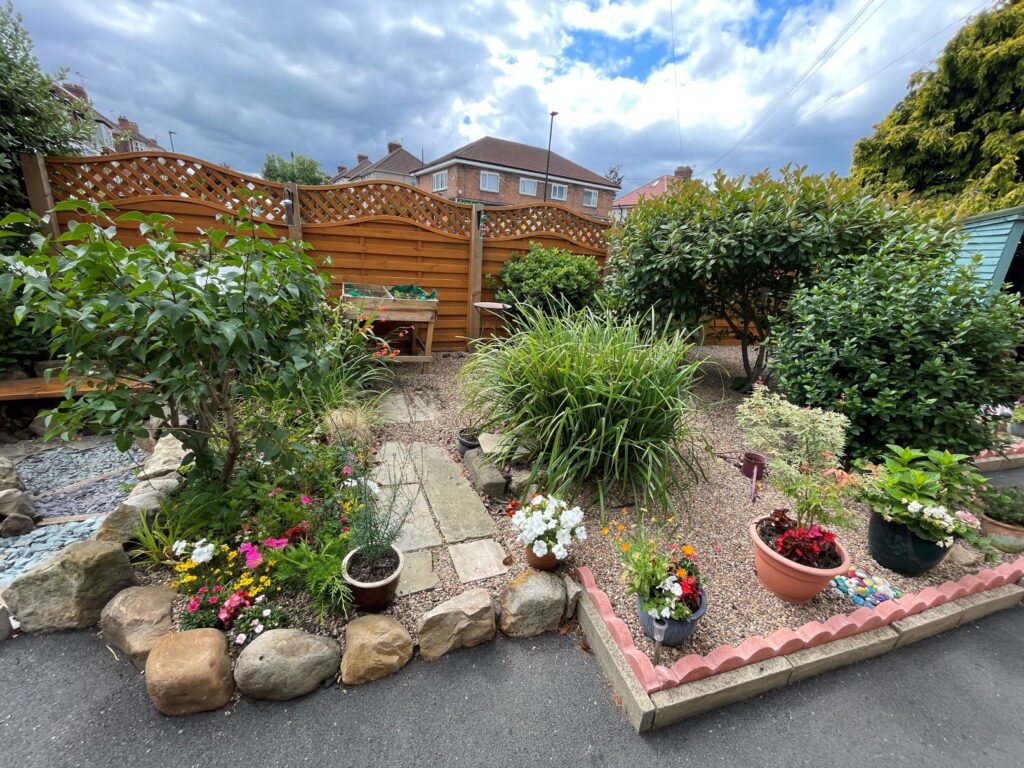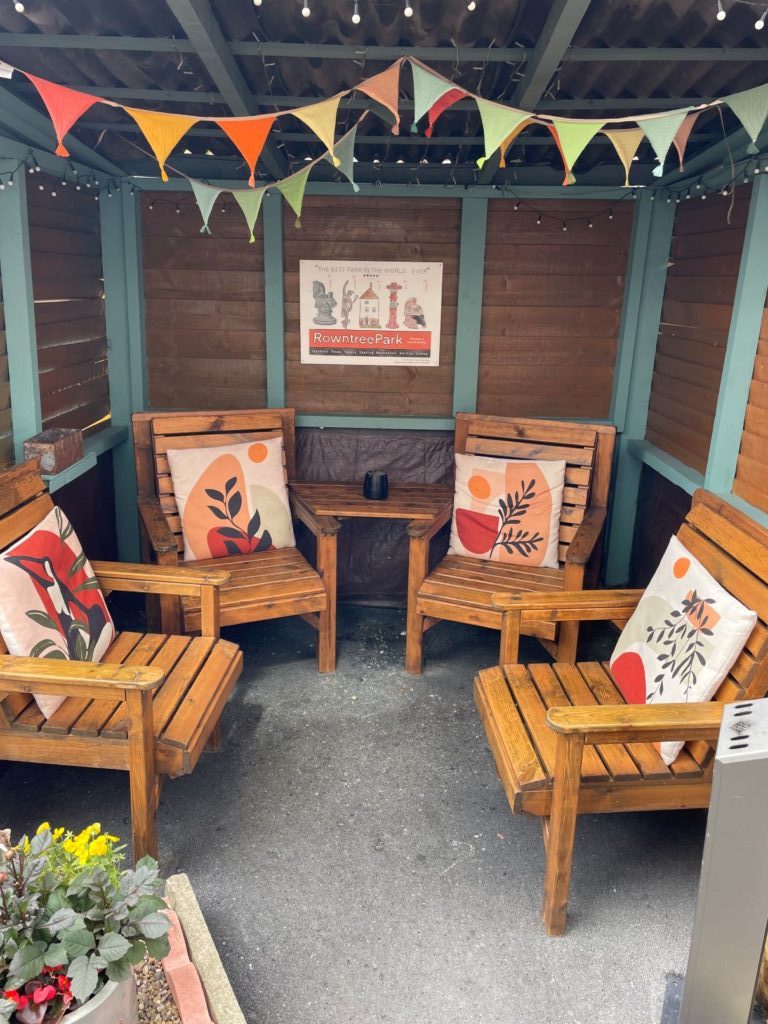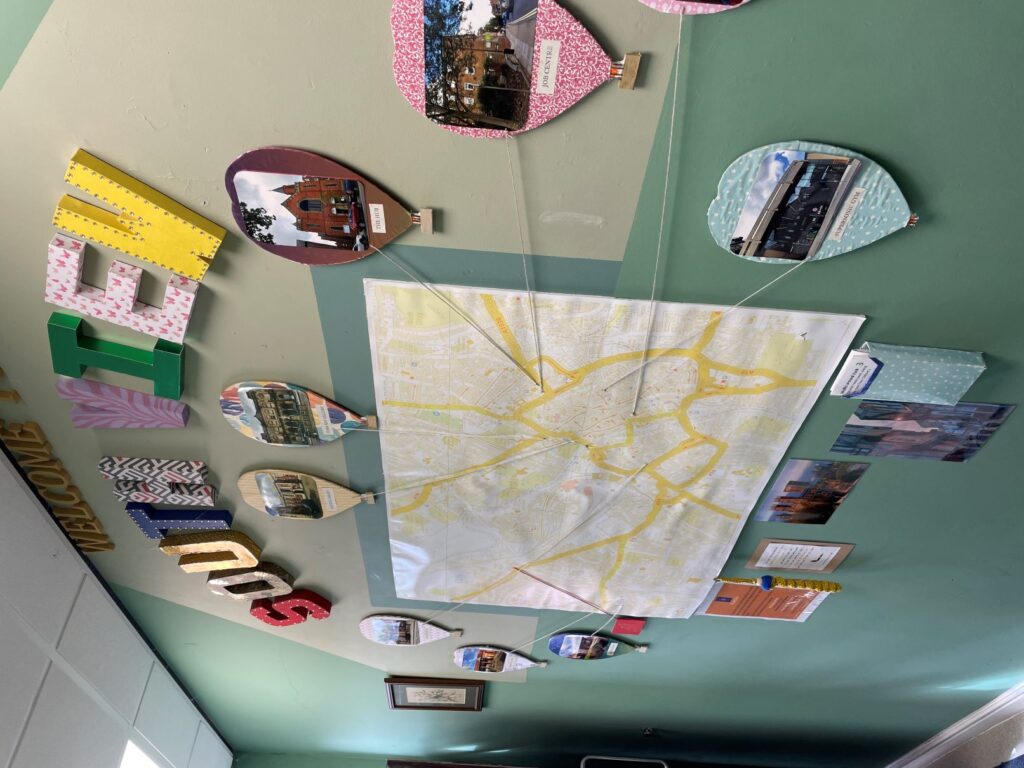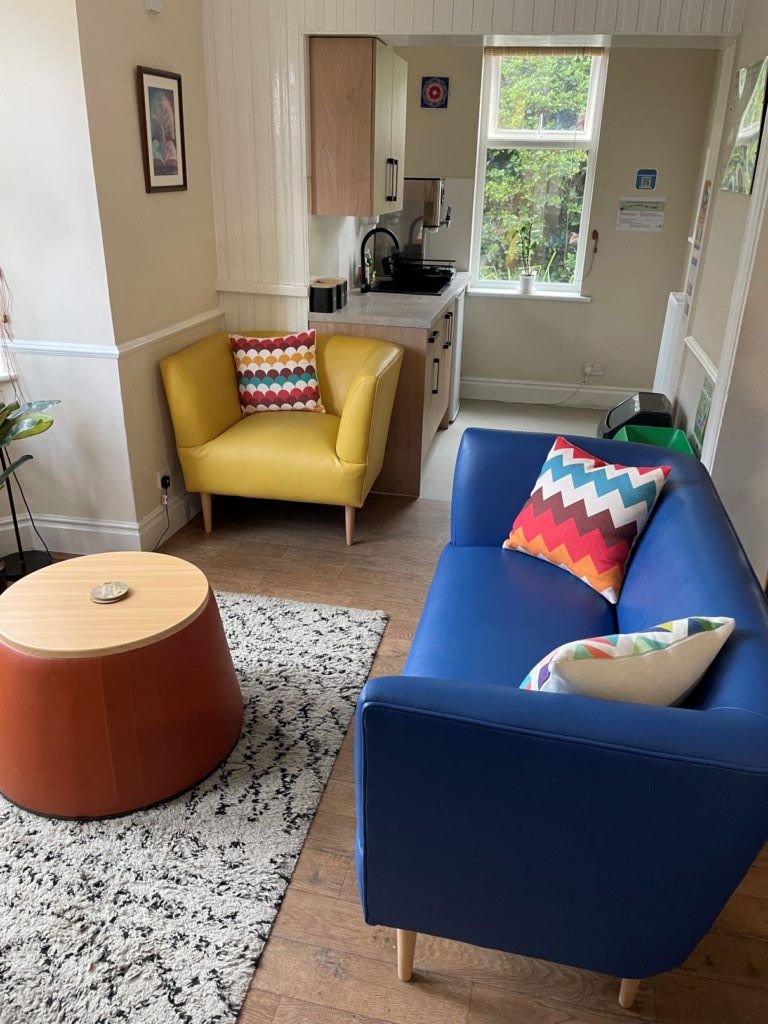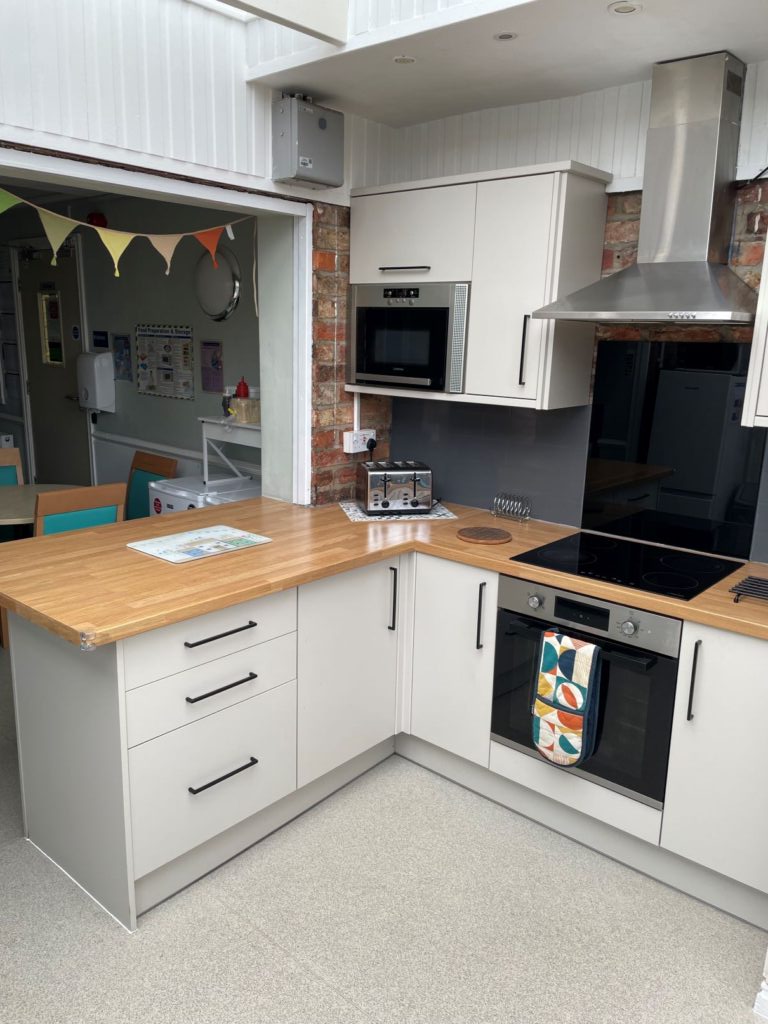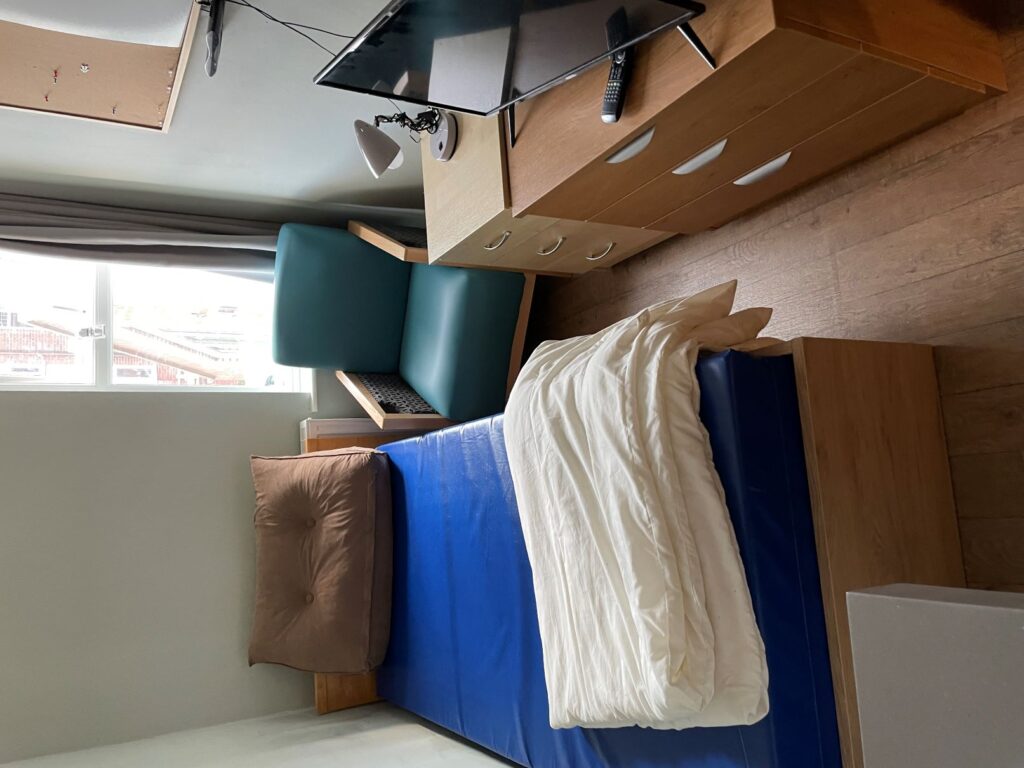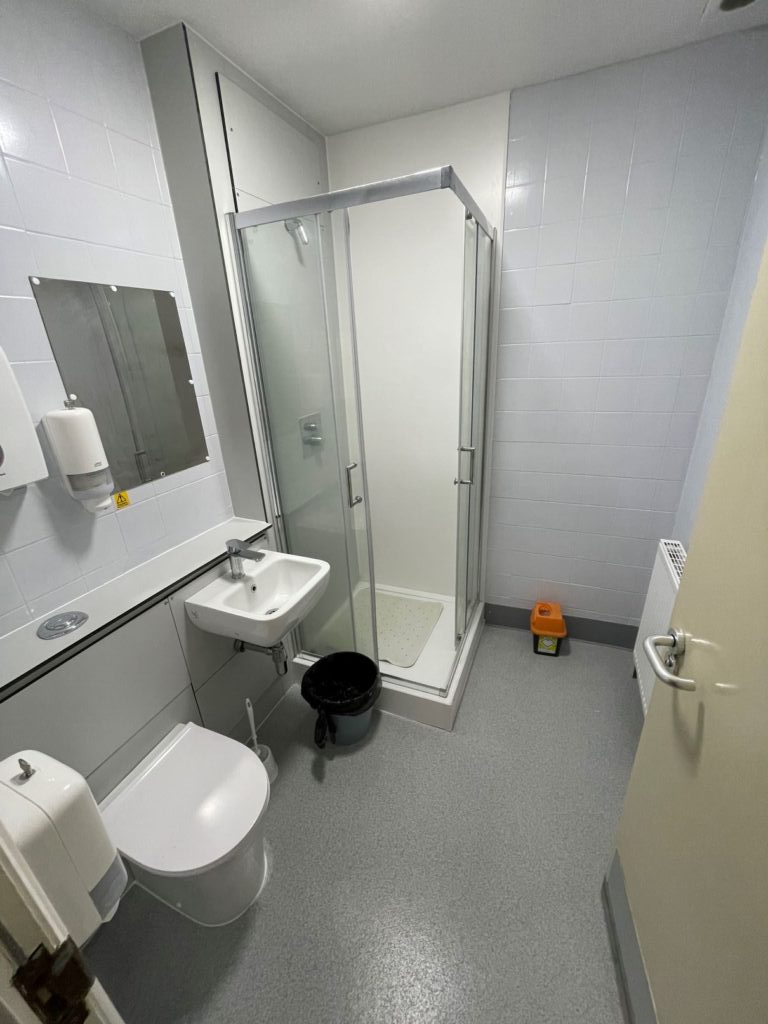An inspection of Southview Approved Premises
Foreword (Back to top)
Approved premises (APs), formally known as probation hostels, play a key role in managing the risks posed by people released from prison who are deemed too complex or high risk to live independently. Until now, APs have not been subject to any form of independent scrutiny, despite the vital role they play in keeping communities safe and providing effective rehabilitation.
I am therefore delighted to announce that Southview AP – the first in our new AP inspection programme – has been rated as ‘Outstanding’.
We found strong and inspiring leadership, stable staffing, and a passionate and motivated team operating in a safe and welcoming environment within which residents felt respected and supported. As a consequence, managers and staff at Southview AP were deploying effective public protection strategies and engaging its residents in a meaningful programme of rehabilitation.
Striking a balance between protecting the public and rehabilitating people on probation, by establishing a quality relationship, is complex, and in other probation inspection programmes, we often find deficits here. It is clear that the psychologically informed planned environment (PIPE) approach embedded at Southview AP is succeeding in getting this crucial balance right.
We have identified a small number of areas for improvement which would enhance delivery at Southview even further – some of which are the responsibility of national leaders to address. In particular, the slow response to outstanding repairs and required building alterations is causing significant frustrations for staff and residents and must be addressed so as not to detract from the outstanding work being undertaken.
The team at Southview should be extremely proud of what they are achieving. I wish them well for the future.
Martin Jones CBE
HM Chief Inspector of Probation
Background information (Back to top)
| Total number of approved premises nationally | 104 |
| Length of time on site by inspectors, including out-of-hours activity | 2 days |
| Total number of bedrooms in Southview | 17 |
| Average length of residents’ stay at Southview | 98 days |
Nationally
APs provide 24-hour monitoring and supervision to their residents and are expected to engage them in interventions to reduce the likelihood of further offending. There are 104 APs in England and Wales. Most are male only, with eight being female only. Twelve are PIPEs, co-commissioned with NHS England. 14 APs are independent – including six of the eight female APs – and led mostly by third sector providers. Independent APs (IAPs) are delivered under contract and in partnership with HM Prison and Probation Service (HMPPS).
Locally
Southview is one of the public sector APs and was awarded PIPE status in 2016. There is a maximum occupancy of 17 males, who are 18 years of age or over. There were 15 residents at Southview at the time of our inspection.
PIPEs are specifically designed environments where staff have additional training to have a better understanding of the psychological and social needs of the people they support. PIPEs focus on both the physical setting and the quality of the relationships within it, recognising how important everyday interactions are. They use daily routines as learning opportunities, helping residents to work through complex personal and social difficulties.
Our inspection methodology
We inspected Southview AP during the week beginning 28 July 2025. This included the off-site inspection of eight cases relating to individuals who were either still resident within the AP or who had recently departed. While carrying out on-site fieldwork, we conducted observations of practice and held interviews with managers and staff, individually and in groups. We also interviewed seven current residents about their experiences at Southview. Our fieldwork also included the inspection of Southview’s ‘out of hours’ activities – specifically, the early morning and evening shift handover processes and a detailed analysis of recent enforcement and recall decisions.
Ratings (Back to top)
| Fieldwork started July 2025 | Score 13/15 |
| Overall rating | Outstanding |
| Standard | Score | Rating |
| Leadership | 2 | Good |
| Staffing | 3 | Outstanding |
| Safety | 2 | Good |
| Public protection | 3 | Outstanding |
| Rehabilitation | 3 | Outstanding |
Recommendations (Back to top)
As a result of our inspection findings, we have made the following recommendations that we believe, if implemented, will have a positive impact on the quality of services delivered at Southview AP.
The Southview leadership team should:
- implement a proactive quality assurance process – including direct observations of practice – to maintain and, where necessary, improve the quality of delivery
- identify a process for routinely gathering and analysing equity, diversity, and inclusion (EDI) information, so that the services delivered and staff skills are fully responsive to the needs of residents
- ensure that staff are familiar with all aspects of the medication management procedures.
HM Prison and Probation Service should:
- review out-of-hours cover arrangements to ensure that staff providing cover have sufficient respite between shifts
- ensure that all facilities management issues are resolved promptly, so that managers and staff within APs can focus on their core responsibilities to protect the public and rehabilitate people on probation.
Leadership and governance (Back to top)
| Leadership and governance drive the delivery of a high-quality service. | Rating |
| Good |
Strengths:
- Southview AP had a clear identity as a PIPE. Its working practices, values, and expectations were outlined in a welcome pack issued to all residents and which was created collaboratively by residents and staff. The welcome pack was an accessible document that provided clear guidance to all residents about the services provided at the AP. Residents and staff all understood the AP’s aims and objectives, and were able to articulate them throughout our inspection.
- There was a warm and welcoming atmosphere and culture, promoted by management and replicated by staff. As a consequence, residents were overwhelmingly positive about the AP, its culture, and the support provided by staff. They felt safe and most were enthusiastic about the AP and wanted to tell inspectors about the support they were receiving.
- We observed warm, respectful, and appropriate communication between staff and residents at various points during our inspection: during rehabilitative activities, a resident induction, a weekly house meeting, and informally, in and around the AP.
- Southview achieved its most recent ‘Enabling Environment’ (EE) award in June 2024, an expectation for all APs in England and Wales. The EE award is a mark of quality, designed to support services to achieve a level of excellence in the way that relationships function within their environment.
- There was effective collaboration with various organisations and agencies to ensure access to interventions and support for residents. A constructive relationship had also been developed with a general practitioner (GP) surgery located close to the AP and which all residents were registered with. Regular meetings were held to maintain an effective partnership. Provision was also maintained with a local chemist, which responded to prescription requests and delivered medication to the AP as needed.
- A strong relationship was developed with the police, and a police community support officer (PCSO) regularly attended the AP and was familiar to residents and staff. In addition, the AP shared information regularly with North Yorkshire Police, to enable a briefing about Southview and its residents to be issued across the community safety partnership to promote effective risk management and public protection.
- Southview performed consistently well against the national service level measures for APs and was one of the most improved within the region. The current manager’s hard work and dedication to improving the AP’s culture and performance was recognised and a huge amount had been achieved since they came into post.
- Staff spoke positively about the AP’s learning culture and commitment to ongoing improvement and professional development. The PIPE principles and working practices embedded at Southview included ongoing dialogue between both staff and residents about how services could be developed and improved. For example, in the weekly house meeting, usually chaired by a resident, feedback was sought from all about changes that could be made to address any deficits in delivery.
- EDI information was gathered at the pre-arrival and induction stages of the supervision process, and in our casework review we observed that the diversity needs of residents were acknowledged and considered in most cases. There was a focus by staff to personalise their approach and make adjustments for residents based on their individual needs.
- Neurodiversity is prevalent among AP residents and people on probation in general, and there were relatively high numbers of residents with diagnoses of autism, attention-deficit hyperactivity disorder, and dyslexia at Southview. We witnessed a sound understanding of neurodiversity among managers, supported and enhanced in particular by the clinical lead’s knowledge and expertise.
Areas for improvement:
- Although there were many impressive elements of leadership, there was no formal or proactive quality assurance. For example, there was no routine audit of AP casework or direct observation of staff interactions with residents. This additional management oversight would enhance the quality of delivery further.
- Similarly, there was no formal or regular analysis of EDI data to enhance understanding about the resident profile within the AP. Staff would also benefit from further development in understanding and responding to neurodiversity.
Staffing (Back to top)
| Staff are enabled to deliver a high-quality service for residents. | Rating |
| Outstanding |
Strengths:
- In addition to having a minimum of two residential workers (RWs) on site at any one time, and two probation service officers/keyworkers generally there between 9am and 5pm, there was a qualified probation officer in the regime lead role and a senior forensic psychologist in post as clinical lead. These roles enhanced the staffing model at the AP, in line with national PIPE specifications.
- All staff interviewed during this inspection emphasised their passion for their roles and enjoyed working at Southview. They were also fully engaged with the PIPE principles and ways of working, and recognised the benefits for residents, the public, and their own professional development.
- There were national mandatory training expectations for new AP staff, and the manager promoted and tracked staff attendance at this, and completion of the package. Our review of the Southview training log showed compliance with these national expectations. In addition to the basic training package for all AP staff, those working in PIPEs (including the chef and cleaners) must receive:
- KUF (knowledge and understanding framework) training, a national initiative designed for professionals working with individuals diagnosed with personality disorders
- EE training
- group process training
- ongoing bespoke training identified by the clinical lead.
- There were extensive staff support and supervision arrangements in place, as a result of the AP’s PIPE status. Every staff member received individual clinical supervision with the senior forensic psychologist every six to eight weeks, as well as facilitated weekly clinical group supervision. This supervision supported individual implementation of PIPE principles, provided an opportunity for self and group reflection, and acted as a support mechanism for all managers and staff working with complex and dangerous individuals within the AP setting.
- In addition, all staff received regular, frequent supervision by their line manager and were positive about the support they provided and their ‘open door policy’.
- Residents praised staff, and we observed positive and appropriate communication between them. Staff communication during handover discussions about residents was professional, and mindful of residents’ needs and differences.
- A positive team culture had been created and staff spoke enthusiastically about colleagues’ willingness to support one another and provide cover as needed. Cover was coordinated appropriately by the AP manager, with support from the AP administrator.
- Staff retention was good, the team was fully staffed, and sickness levels were low. This all helped with the management of resources and the level of stability and consistency provided for residents.
Areas for improvement:
- Although the staffing situation was stable, we observed some vulnerability in the national out-of-hours cover arrangement procedure. When an RW due to work a night shift called in sick, an ‘on-call’ staff member who had already worked a full day was brought in to cover for them. Although the manager appropriately delayed the shift start time, this resulted in an RW who had worked during the day, and the covering staff member, working well above their scheduled hours. This was in breach of working time regulations. Fortunately, this was not a regular occurrence.
- Line management supervision could be improved further with the provision of clear and formal notes from such meetings being provided to staff.
Safety (Back to top)
| The approved premises provides a safe, healthy, and dignified environment for staff and residents. | Rating |
| Good |
Strengths:
- Risks of self-harm and suicide were managed appropriately. We observed professionally curious handover discussions between staff where the behaviours and demeanour of individual residents were being actively considered for signs of self-harm. National expectations for the timely completion and review of support and safety plans (SaSPs) were consistently met and an SaSP was completed in every case reviewed for this inspection. The clinical lead paid close attention to residents’ risks of self-harm and suicide in supervision with all staff.
- The storage and administration of medication were consistent with policy and aligned with best practice. Staff had received medication training and reported confidence in the process. As required, medication was routinely audited by two members of staff, supporting safe practice.
- The general wellbeing and safety of residents were a priority, and appropriately balanced against the need to monitor the risks they posed. For example, staff accompanied every resident to their initial GP appointment, to encourage their engagement with health and treatment. The AP had also identified residents’ vulnerability to ‘catfishing’[1] when released from prison. In response, an online safety group was established to help residents navigate the internet safely.
- Residents’ behaviour was managed appropriately. Clear and detailed PIPE behaviour improvement plan guidance was in place; this was contained within the resident welcome pack and explained verbally during induction. The selection of improvement plans we sampled were appropriate to the behaviours being responded to, while also being inclusive and motivational. Our review of recent enforcement, recall decisions, and the staff response to positive drug and alcohol testing also showed the team’s ability to assess and manage poor behaviour and identify emerging risks within the AP. We also observed robust and thorough room searches.
- Southview was refurbished between October 2024 and January 2025. It appeared clean and homely. Residents were generally happy with the AP’s environment and appearance, with communal areas making them feel welcome and at home. There was an attractive garden at the front of the property that was created, and then maintained, by residents.
- Appropriate adaptations were made to bedrooms to manage risks. There were two adapted rooms for those posing a risk of committing arson, and all rooms had anti-ligature furniture to reduce the potential for self-harm and suicide. Although the AP had initially had three double rooms, with the expectation that a number of residents would share, these had appropriately been decommissioned by the current leadership team. Sharing of bedrooms was deemed inappropriate and not conducive to rehabilitation or in line with the PIPE regime.
- There was acceptable closed-circuit television camera coverage throughout the AP. Panic alarms were in place and were tested frequently, as were fire alarms. Staff and visitors were provided with personal attack alarms.
Areas for improvement:
- Not all staff were aware of the procedure for obtaining emergency medication when a resident’s supply ran out, despite escalation processes being in place. This gap in awareness was evident during our observations. We also observed a lack of staff knowledge about the need to review assessments of whether individuals could self-administer prescribed medicines (medication in-possession assessments) following relevant changes, such as positive drug tests.
- Two bedrooms were out of action at the time of our inspection, waiting for repairs from facilities management services that the team at Southview had identified and escalated appropriately. There were also significant issues with the residents’ dining room, which did not have adequate ventilation or a window that opened. Staff and residents told us that the space was often unbearably hot. Although air conditioning units had been provided, these were not adequate. The poor response to buildings maintenance issues via the facilities management contract sometimes caused considerable frustrations for both staff and residents. This required attention at a national level.
Public protection (Back to top)
| The approved premises effectively protects the public. | Rating |
| Outstanding |
Strengths:
- Southview was represented at all multi-agency public protection arrangements (MAPPA) meetings, with the area manager, AP manager, and regime lead sharing attendance responsibilities in line with their grade and level of responsibility. Keyworkers were also encouraged to attend MAPPA meetings for their own cases, when available. The North Yorkshire Police partnership briefing about Southview, created using information appropriately shared by the AP manager, was a good example of multi-agency risk management.
- We were provided with extensive examples of appropriate enforcement decision-making. Recording of these processes was also strong. The cases we inspected showed that the judgements made in response to poor behaviour, substance misuse, and missed curfews were sound and appropriate.
- The improvement planning process was collaborative and thoughtful, with attention given to maximising engagement from residents at all times.
- Referrals to both child and adult social care services were made when necessary. In the relevant cases reviewed, safeguarding practice was strong.
- Liaison and collaboration with probation practitioners by staff at Southview was particularly good, and we saw evidence of this in all of the cases reviewed for this inspection. We saw keyworkers and probation practitioners holding joint sessions with residents, to deliver consistent messaging and support. Moreover, the regime lead regularly gave presentations to teams across North Yorkshire, to promote the AP, explain more about the PIPE regime, and improve liaison and referrals.
- Staff liaison with the police was good, enhanced by the relationship developed with the local PCSO and their presence in and around the AP. We observed both morning and evening handovers, and these were comprehensive and appropriately recorded. There was an additional layer of morning handover at 9am, after the initial handover from night staff to day staff had taken place at 8am. The 9am team discussion enabled all staff in the AP to be updated about the night’s events and ensured collaborative decision-making about enforcement decisions.
Areas for improvement:
- We did not identify any areas for improvement in relation to public protection.
Rehabilitation (Back to top)
| The approved premises delivers activity to reduce reoffending. | Rating |
| Outstanding |
Strengths:
- The AP aimed to have pre-arrival contact with all residents before their reception, to start building a relationship and promote engagement and compliance. This was achieved in most of the inspected cases. All seven of the residents interviewed reported that they had had contact with a staff member from Southview before their arrival.
- Staff delivered a thorough and detailed induction, with Southview consistently performing above the national average for timely delivery of the two-stage induction process. The provision of the welcome pack to all residents, clarifying expectations, was an additional touch to promote engagement and to put new residents at ease.
- The AP collaborated with a range of local services to promote the effective rehabilitation of residents. Examples included:
- Change, Grow, Live – which had a presence at the AP every fortnight to provide support to residents experiencing problems with substance misuse.
- The HMPPS Creating Future Opportunities activity hub – which visited the AP regularly to provide debt advice and support for education, training, and employment.
- The Fire Service – which provided a bespoke package of support for the AP and its residents.
- Hepatitis C Trust – which provided regular hepatitis testing and support for residents.
- Alcoholics Anonymous – two ‘lived experience’ volunteers attended the AP regularly to provide additional support and mentoring for those with substance misuse problems or aiming to prevent relapse.
- There was extensive planning and delivery of rehabilitative activities, led by the probation officer, in collaboration with residents via the activities group and the resident activities representative. These activities ensured that residents were taking part in constructive and worthwhile pursuits, with the aim of helping to reduce the likelihood of further offending. Every case reviewed for this inspection showed the resident to be engaged in appropriate activities to meet their needs and build on their strengths.
- Relational practice was at the heart of everything at Southview, as part of its PIPE approach, and this was observed by our inspection team throughout our time at the AP. The aim of relational practice is to help staff to understand and manage high-risk, high-harm individuals in a constructive and non-judgemental way, giving priority to interpersonal relationships. All residents interviewed for the inspection commented positively about their treatment by staff.
- Our inspection of Southview cases showed frequent, good-quality one-to-one work between AP keyworkers and residents, and six of the seven residents interviewed said that their keywork sessions were either “excellent” or “good”.
- It was positive that residents were able to stay at the AP for up to six months, giving more opportunity to help them achieve meaningful progress and secure a successful move-on into other accommodation.
Areas for improvement:
- Although we saw examples of staff supporting residents to move on from the AP, there were limitations, due to a shortage of accommodation in the North Yorkshire area.
Press release (Back to top)
Southview Approved Premises in York rated ‘Outstanding’ as new inspection programme launches
Response letter (Back to top)
Approved premises inspection response letters and action plans
Further information (Back to top)
[1] The creation of a fictitious online persona, or fake identity (typically on social networking platforms), with the intent of deception.
Images (Back to top)
